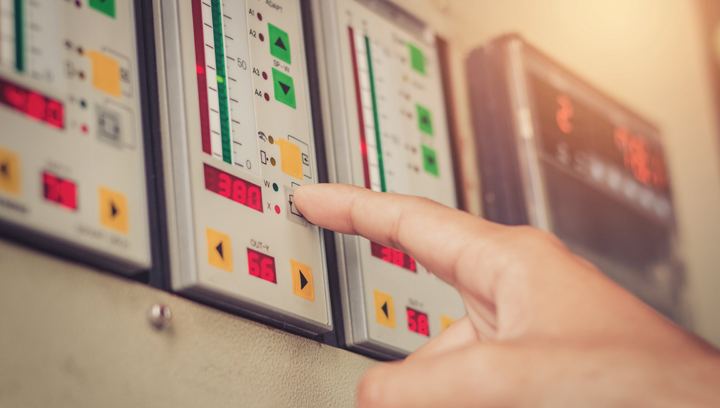VARIABLE SPEED DRIVES: THE DARK SIDE

While labelling variable speed drives (VSDs) as the Jekyll and Hyde of industry would be extreme, it is accurate to say that they possess a, widely unknown, darker side. VSDs are rightly hailed as effective energy savers and help industrial applications to reduce their power outputs, but their impact on power quality is less often discussed. Here’s how electrical engineers can combat VSDs’ darker side.
According to ABB, the power and automation company, the addition of a VSD can reduce energy consumption by as much as 60 per cent. This means that, if a 90-kilowatt (kW) motor in continuous operation is combined with a VSD, financial savings can amass to over £9,000 per year.
A VSD can help achieve these savings by better catering for the needs of a specific application — we could refer to this as the device’s positive Dr. Jekyll side. Traditionally, induction motors run at fixed speeds and are suited to applications that require a constant motor output speed, such as in pumps or fans. Yet, sometimes, varying motor output speeds are preferable to meet the changing requirements of the load, such as in fans, pumps and precision tools.
Also known as a frequency converter or adjustable speed drive, a VSD is able to control the speed and torque of the motor to better match the process requirements of the machine it is driving. It is the slowing down, when necessary, that helps recoup energy and costs that would otherwise go to waste.
RIDING THE WAVE
Of course, the bottom line of any plant manager’s ambitions is to reduce costs and improve operational efficiency, and a VSD helps to achieve just that. While a manufacturer should not be dissuaded from purchasing VSDs for use with electrical equipment, they must pay attention to an “unwanted ingredient” that the device might add to the power mix.
When existing equipment has to share its power network with connected add-ons, harmonics can become a problem. These harmonics are voltage or current waveforms that have a different frequency to that of the network, and may cause devices to behave erratically.
The undesirable Mr. Hyde aspect of a VSD is that it can create these harmonic currents due to the conversion of an incoming alternative current (AC) waveform to a direct current (DC) source, in order to create modulated pulses that control the AC motor. This back and forth, from AC to DC, results in current waveforms that are greater than the network frequency can handle.
As a result of the unwanted currents, cables may overheat which damages their insulation. Other unwanted consequences include that motors can be at risk of overheating and becoming noisy; circuit breakers may trip; meters can give false readings; or equipment might fail altogether.
CUT THE CURRENTS
To prevent these unwanted effects from occurring, manufacturers can implement a number of techniques. Reduction is one obvious remedy, which involves the use of AC line reactors, known as chokes. These chokes are fitted either inside or outside the drive, to reduce the harmonics to a level where they no longer cause serious issues.
However, the use of a large choke can have major size and cost drawbacks, which makes the solution unsuitable for some applications. An AC choke also has a voltage drop that impacts the system.
FILTER THEM OUT
Harmonics caused by VSDs can be reduced to acceptable levels by using passive filter circuits that consist of inductors, capacitators and resistors. The filter circuit allows the fundamental frequency to pass through while diverting any harmonic frequencies to the resistor bank. Here, the frequencies are dissipated as heat and are removed from the system.
The introduction of a dampening resistor can also offer a number of benefits to the system. They include better filtering characteristics for higher frequencies, reduced amplification at parallel resonance frequency, as well as higher filter losses at the fundamental frequency.
Cressall builds discharge resistors that meet the stringent operating conditions of customers such as Siemens, Areva and also the National Grid Company, both in the UK and its counterparts overseas. Cressall’s design expertise in the field is well-known, as a result.
Based on Cressall’s experiences within the industry, perhaps the most commonly used material in the design of harmonic filter resistors is expanded mesh. This material has a high surface area, which gives it excellent heat dissipation and makes it ideal for continuous filtering duties.
The active material, insulators and mountings on expanded mesh resistor elements maximise the use of convection to avoid hot spots and local overheating. However, as the elements are thin, expanded mesh can bow when exposed to high levels of heat, and this uncontrollable bowing can cause sparks.
To remedy this, Cressall has developed a technique that allows bowing to take place in the same direction. By improving the shape of expanded mesh, the company has been able to prevent this fault from occurring so that dampening resistors made from expanded mesh can filter VSD harmonics, without the risk of sparking.
Given their many advantages, it wouldn’t be right to label VSDs as being solely a Mr. Hyde “electrical circuit villain”. After all, the additional levels of performance flexibility that the devices give to motors are essential — as are the resulting cost savings. However, to stop VSDs from drifting to the dark side, unwanted levels of harmonics must be tackled to allow for optimal performance.
To learn more about Cressall’s harmonic filtering technologies, click here
